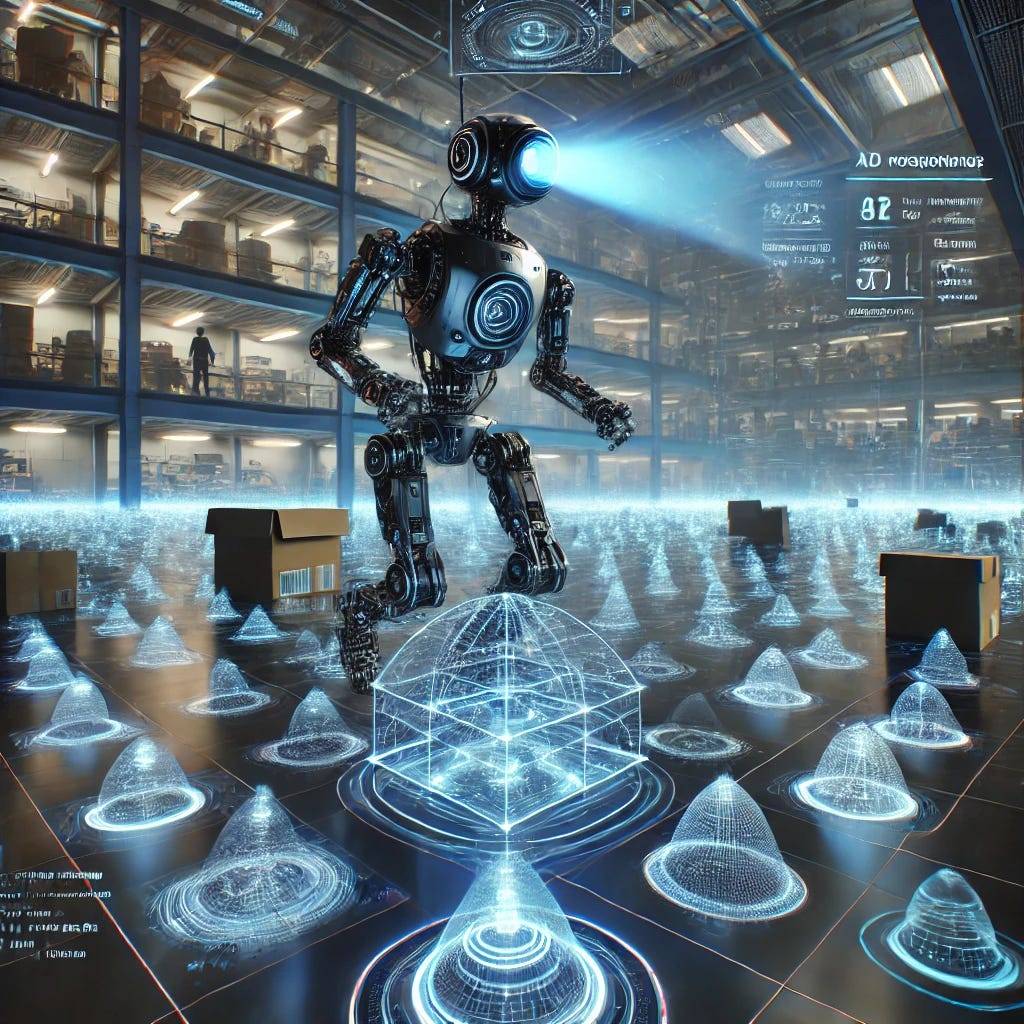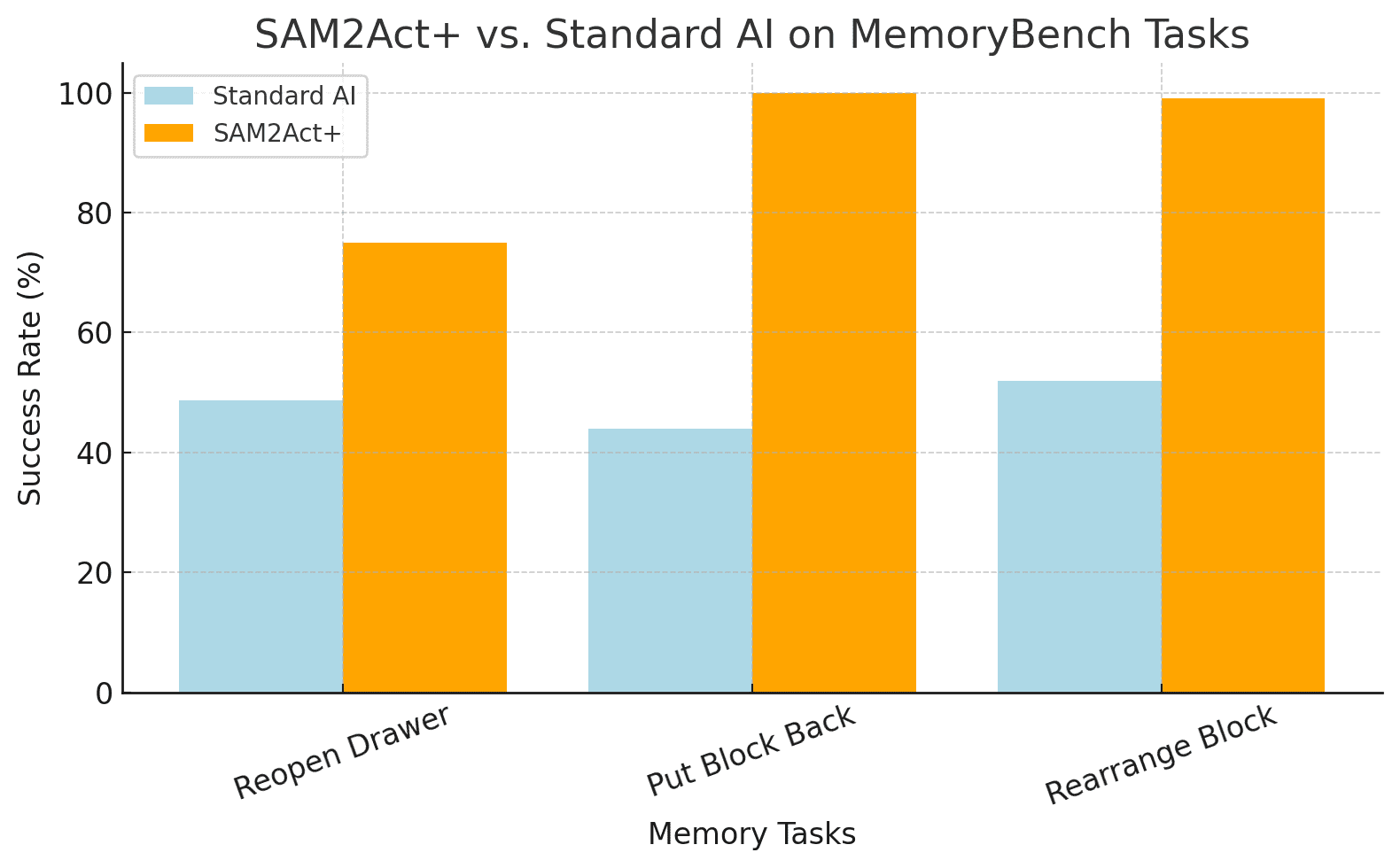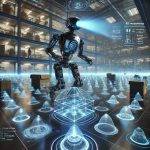Meet the AI that remembers where it left your tools.

Robots excel at following instructions, but what if they could remember past actions and learn from them? The evolution of robotic intelligence has long been stunted by their inability to retain spatial memory — until now. Meet SAM2Act+, a cutting-edge robotic manipulation system designed to remember and react based on past interactions. By integrating a multi-view transformer model with a memory-based architecture, SAM2Act+ breaks free from the limitations of traditional automation. It not only interacts with its environment but recalls where objects were previously placed, adapting dynamically like a human mind. This advancement opens the door to AI-driven spatial reasoning, changing how robots interact with complex environments forever.
SAM2Act+: How Robots Learn to Remember
For decades, robotic systems were built on a reactive framework — perceiving the present but never the past. SAM2Act+ disrupts this model by introducing a memory-driven architecture, allowing robots to recall and refine actions. Inspired by the brain’s ability to track movement and object placement, this system integrates:
- A Memory Bank that stores historical spatial data.
- A Memory Encoder that processes past interactions.
- An Attention Mechanism that retrieves and applies stored knowledge.
This means a robot can remember where it last placed a tool, track movements over time, and recall past actions to make better decisions. Traditional automation executes predefined movements, but SAM2Act+ adapts, making it a leap toward true cognitive robotics.
The Power of Multi-View AI: Seeing the World in 3D
Most robotic systems rely on single-camera views, leading to flat, incomplete spatial understanding. SAM2Act+ adopts a multi-view transformer architecture, meaning it processes multiple perspectives at once, creating a 3D spatial awareness model. This shift dramatically enhances:
- Precision in object manipulation.
- Environmental adaptability under different lighting and object variations.
- Multitask efficiency, reducing the need for extensive retraining.
A key feature is multi-resolution upsampling, refining the details of spatial maps so robots can act with pinpoint accuracy. Imagine a robot chef that remembers where it placed ingredients, or a warehouse bot that recalls where it stored packages without scanning them again. This is the future SAM2Act+ is pioneering.
How MemoryBench Pushed AI to the Limit
To truly test whether SAM2Act+ could retain and recall information, researchers developed MemoryBench, a benchmark designed specifically for memory-based AI tasks. These tests evaluated:
- Reopen Drawer — Can the robot remember which drawer it closed and reopen the same one later?
- Put Block Back — After moving an object and pressing a button (resetting the scene), can it return the object to its original location?
- Rearrange Block — Can the robot recall previous interactions and execute correct spatial adjustments?
SAM2Act+ Performance on MemoryBench
Let’s visualize how well SAM2Act+ outperformed traditional AI models.

Robots Can Now “See” the Past
Using a memory encoder, SAM2Act+ can reconstruct previous actions — like remembering which drawer was opened last — even after the scene resets.
Multi-View AI Creates a True 3D Memory
By processing multiple angles at once, SAM2Act+ generates a comprehensive 3D model of its environment, something standard AI models struggle to do.
AI Can Now Perform Backward Reasoning
In the Rearrange Block test, SAM2Act+ didn’t just recall past actions; it reasoned backward to determine which block needed to be moved first.
91.3% Success Rate on MemoryBench
Compared to traditional models scoring under 50%, SAM2Act+ reached a 91.3% accuracy rate in memory-dependent robotic manipulation.
Real-World Robots Are Learning Like Humans
From warehouse bots remembering item locations to robotic assistants recalling past interactions, memory-enabled AI is bridging the gap between automation and cognition.
A Future Where Robots Remember
The dawn of memory-enabled AI marks a profound shift in robotics, transforming machines from passive executors into intelligent agents that recall, adapt, and refine their actions. SAM2Act+ is more than an incremental improvement — it is a step toward bridging the gap between artificial intelligence and human-like cognition. By integrating memory mechanisms with spatial reasoning, it allows robots to operate with unprecedented precision and awareness, making automation more fluid, efficient, and intelligent.
The implications extend far beyond laboratories and benchmarks. In homes, robots could soon assist with daily tasks, remembering where objects were last placed. In warehouses, they could manage logistics with seamless accuracy, recalling past item locations without scanning them repeatedly. In hospitals, robotic assistants could track medical instruments with meticulous care, enhancing patient safety. This is no longer just an evolution of AI — it is the foundation of a future where machines learn, remember, and respond with a depth of understanding that once seemed impossible.
About Disruptive Concepts
Welcome to @Disruptive Concepts — your crystal ball into the future of technology. 🚀 Subscribe for new insight videos every Saturday!
See us on https://twitter.com/DisruptConcept
Read us on https://medium.com/@disruptiveconcepts
Enjoy us at https://disruptive-concepts.com
Whitepapers for you at: https://disruptiveconcepts.gumroad.com/l/emjml
New Apps: https://2025disruptive.netlify.app/







